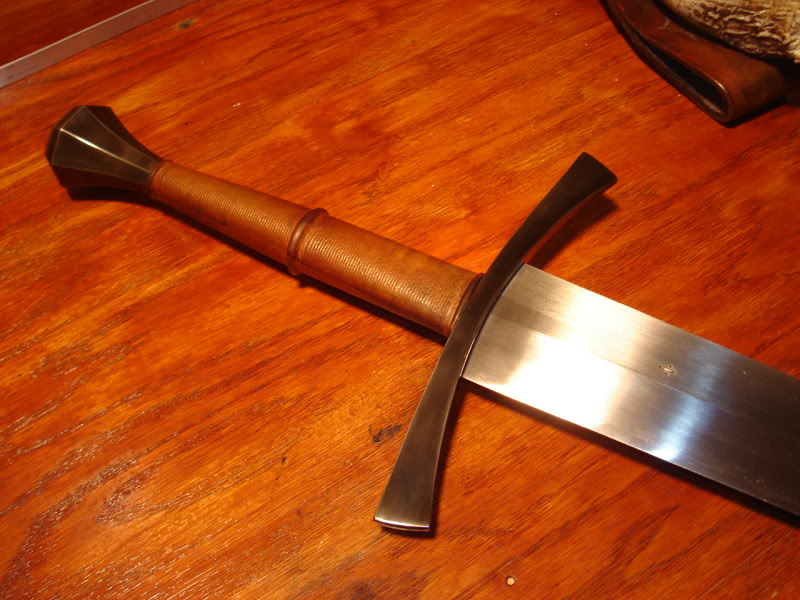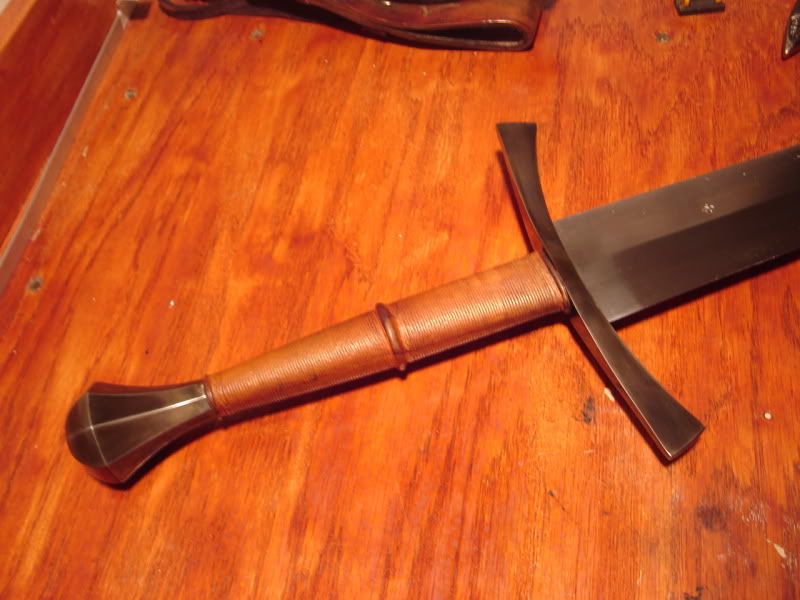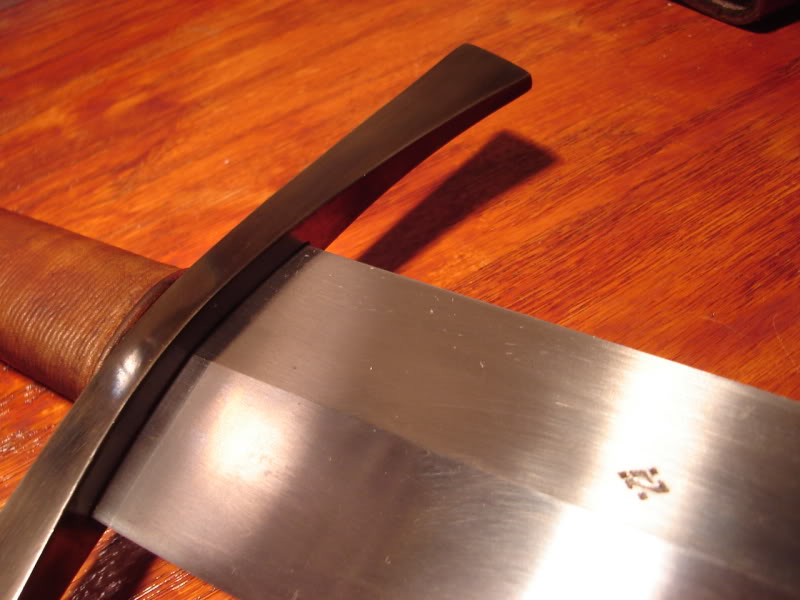As most everyone here knows, I hate the stock finish on most new swords. They always look too new, where as I prefer a little more age / wear and tear. Rather than do something to make it rust prematurely or pit the finish, I like to add a light antique grey to dark grey finish. I use a mild chemical blue which will easily come off with 000 steel wool and gun oil, so it's not really a permanant change, but it adds alot of character to the weapon. The good thing is that no harm comes to the original finish of the sword - any light scratches or wear is on the outer layer of blue rather than actually damaging the metal.
My wife and I agree that the new finish matches the original grip character much better. I am happy with how it turn out!
Thanks in advance for your comments!


